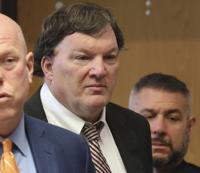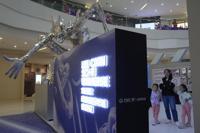NEW YORK (AP) — The New York architect facing murder charges in a string of deaths known as the Gilgo Beach killings is challenging the DNA evidence against him and seeking separate trials in the sprawling case.
Rex Heuermann’s lawyers argue DNA analysis relied on by prosecutors is not widely accepted in the scientific community and should be excluded from the trial. The Long Island resident's defense team also wants to break out the case against him into multiple trials.
Since late 2010, police of at least 10 people — mostly female sex workers — whose remains were discovered along an isolated highway not far from Gilgo Beach on Long Island’s south shore.
Heuermann was arrested in 2023 and charged in the between 2009 and 2010: Melissa Barthelemy, Amber Lynn Costello and Megan Waterman.
While in custody, he was subsequently charged in the deaths of in 2000, in 2003, in 2007 and Sandra Costilla in 1993.
Huermann has maintained his innocence and pleaded not guilty to all counts.
Michael Brown, Heuermann's attorney, said following a Wednesday court hearing that his client risks being improperly convicted because of the “cumulative effect” of the evidence put forward by prosecutors.
He also argued there’s a “substantial disparity” in the evidence in the some of the deaths, which he maintained involves different time frames, killing methods and locations for disposing the bodies.
“The danger of having count after count, victim after victim in the same trial is that 'If there's smoke, there’s fire' mentality," Brown said. “They shouldn’t be tried together. One issue has nothing to do with the other.”
Prosecutors on Wednesday filed a written response to the DNA challenge and said they will respond to the motion for separate trials later. Heuermann’s next court date is Feb. 18.
DNA results from hair strands found at some of the crime scenes are among the key pieces of evidence prosecutors have put forward in the case.
Suffolk County District Attorney Ray Tierney has maintained the DNA science is sound and that his office will oppose separate trials.
In their Wednesday filing, prosecutors argued that the “whole genome sequencing” technique utilized in the case has been accepted in peer-reviewed scientific journals and by federal regulators, paleontologists, virologists, and medical communities.
The findings by Astrea Forensics, a California lab, were also independently corroborated by mitochondrial DNA testing, a methodology long accepted by New York courts, prosecutors said.
Whole genome sequencing “enables more comprehensive collection and evaluation of DNA,” prosecutors wrote. It is “so widely used for scientific, medical, and forensic purposes, it would seem there is little question as to whether it has been accepted in the relevant scientific community."
Prosecutors also say Heuermann kept a “blueprint” of his alleged crimes on his computer that included a series of checklists with tasks to complete before, during and after the killings, as well as practical lessons for “next time.”
















































